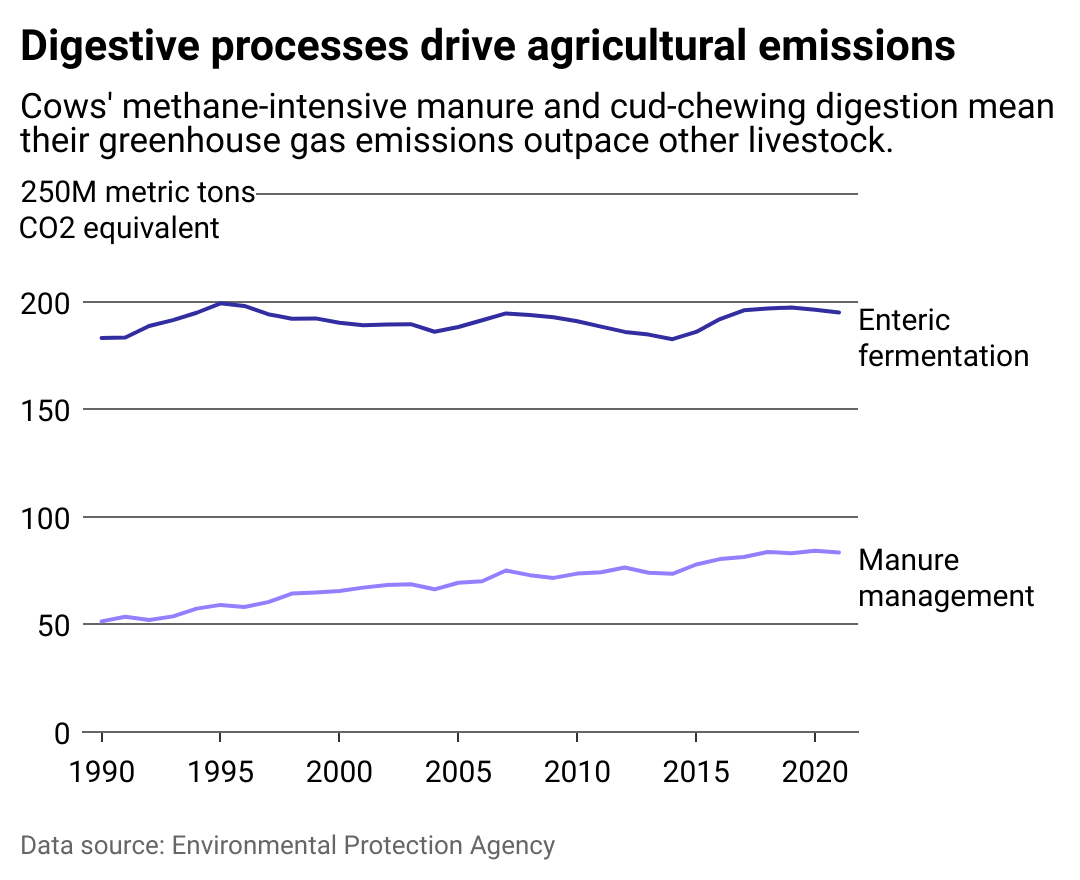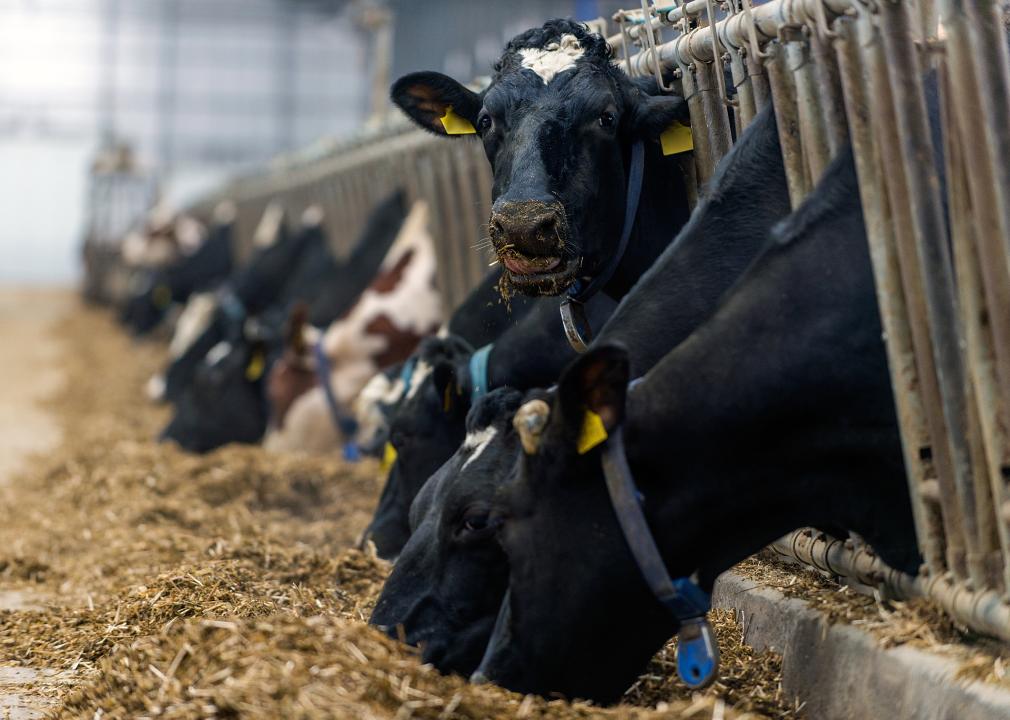States that produce the most greenhouse emissions from agriculture
Vipavlenkoff // Shutterstock
States that produce the most greenhouse emissions from agriculture
Modern cowshed with a row of cows eating.
The modern world emits over 50 billion metric tonnes of greenhouse gases annually. From the gasoline that fuels cars to the fossil-fueled power plants that electrify homes, the industrialized economy drives a significant portion of emissions. However, one of the largest contributors to global greenhouse gas emissions is one of the oldest traditions of human civilization: agriculture.
In the U.S. alone, there are more than 895.3 million acres of farmland, according to the U.S. Department of Agriculture. Working farms grow the crops and livestock that feed and clothe the world. As stewards of the land, many farmers have adopted innovations to improve everything from soil health to minimizing environmental impacts like erosion and water waste.
However, even more sustainable agriculture approaches can still leave a footprint, and the farm sector can vary in practices. Currently, agricultre represents 11% of all emissions in the U.S., and the vast majority of agricultural emissions are derived from animal agriculture. Findbusinesses4sale used data from the Environmental Protection Agency and Department of Agriculture to explore emissions intensity from agriculture across the U.S.
Most agricultural emissions aren’t carbon dioxide but other greenhouse gases: methane and nitrous oxide. Methane lasts a shorter time in the atmosphere, about 12 years, but it has a more potent heat-trapping effect, up to 30 times the amount of carbon dioxide. Nitrous oxide is even more powerful and a bit longer-lived, about 300 times stronger than CO2 and lasting just over a century. When calculating the combined effects of greenhouse gases, these gases are converted to carbon dioxide equivalents and added to actual CO2 emissions.
In 2020, carbon emissions worldwide averaged 6.3 tons per person, according to the United Nations. The U.N. estimates that figure could be reduced by 1.5 tons if people switched to a vegetarian diet; shifting to a vegan diet could reduce emissions even more, up to 2.1 tons per person.
Plant-based foods are still responsible for greenhouse gas emissions, though. Rice cultivation, often using flooded paddies, accounts for about 10% of global methane emissions. Research has shown that draining the fields more frequently could reduce rice-production emissions by half.
Growing crops to feed livestock is also a major source of environmental impact. Feed production alone accounts for 45% of emissions, according to the Food and Agriculture Organization of the United Nations. Fertilizers and soil management practices drive nitrous oxide emissions, accounting for 75% of all nitrous oxide emissions in the U.S.
![]()

Findbusinesses4sale
Manure is a growing source of agricultural emissions
Multiline chart showing US emissions from dairy cattle manure have risen along with swine. A large dairy industry and cows’ methane-intensive manure mean dairy cattle greenhoues gas emissions outpace other livestock.
Beyond growing feed, animal agriculture’s large greenhouse gas footprint is largely due to animals’ digestive processes. When manure breaks down, it emits methane and nitrous oxide, but the bigger culprit for livestock emissions is a separate process known as enteric fermentation. Essentially, it’s burping that cud-chewing animals like cows and sheep naturally do to digest grass and hay. But those cow burps also contain methane.
A single cow is responsible for 154-264 pounds of methane gas annually, according to the EPA. While cows and other livestock have always produced these gases through their bodily processes, human domestication dramatically expanded livestock. Wild herds feeding on pastures became less common as ranches and eventually factory farming increased livestock, making it one of the biggest sources of methane emissions.
The methane from livestock is part of the natural carbon cycle, but organizations like the World Resources Institute have outlined several possible steps that could help lower emissions, such as encouraging development of cattle feeds that reduce cow burping and better approaches to manure management. When scaled up, these approaches can make a significant contribution to lowering overall environmental impacts, some experts say.

Findbusinesses4sale
Differences in agricultural economies drive different emissions intensity across states
Map showing differences in agricultural greenhouse gas emissions by state.
California produces nearly 12% of the value of all food grown in the U.S. But when it comes to livestock production, it ranks behind Texas and Iowa. Although California still accounts for nearly 7% of livestock value in the U.S., its warm weather allows diverse crops to thrive. Its larger fruit and vegetable production keeps its agricultural emissions lower than many other states. Some crops, like almonds, remain water-intensive in the drought-prone state.
The states with the most agricultural emissions have largely livestock-based agriculture. Over one-third of Montana’s agricultural receipts come from cattle. In Wyoming, the share reaches over 56%, with an additional 13.5% of its agricultural receipts from other animal products.
Story editing by Jeff Inglis. Copy editing by Paris Close. Photo selection by Clarese Moller.
This story originally appeared on Findbusinesses4sale and was produced and
distributed in partnership with Stacker Studio.


